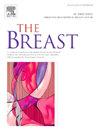Identifying germline pathogenic variants in breast cancer using tumor sequencing
IF 5.7
2区 医学
Q1 OBSTETRICS & GYNECOLOGY
引用次数: 0
Abstract
Purpose
To investigate the performance of an in-house tumor sequencing panel to identify patients with breast cancer and a germline pathogenic variant (gPV).
Patients and methods
Retrospective and blinded tumor sequencing analysis in 90 patients with breast cancer and prior germline genetic testing (45 non-carriers and 45 carriers of a gPV) using an in-house panel (VHIO-300). Sensitivity (S), specificity (Sp), positive predictive value (PPV), and negative predictive value (NPV) of tumor sequencing were calculated. A Cohen's kappa coefficient ≥0.80 was predefined as minimum to be reliably acceptable for clinical implementation.
Results
The cohort included 84 women and 6 men with a median age of 48 years (29–84). Tumors of germline carriers were mainly stage II (47 % vs 31 %, P = 0.047), luminal B-like (56 % vs 31 %, p = 0.037) or triple negative (22 % vs 16 %, = 0.037). The in-house tumor panel identified 91 % (40/44) of the gPV. The analysis did not detect any of the 2 patients with germline large rearrangement alterations nor 2 of the 7 patients with intronic variants included. The tumor sequencing panel yielded 7 % of false positive results (ie, genetic alterations suggestive of germline origin). Hence, S was 91 %, Sp 93 % and Cohen's kappa coefficient between tumor and germline testing was 0.84 (95 % CI 0.73–0.95).
Conclusion
Tumor tissue sequencing with our in-house panel demonstrated an acceptable performance to identify patients with breast cancer carriers of a gPV.
利用肿瘤测序鉴定乳腺癌的种系致病变异
目的研究内部肿瘤测序小组在识别乳腺癌患者和种系致病变异(gPV)方面的表现。患者和方法使用内部面板(VHIO-300)对90例乳腺癌患者进行回顾性和盲法肿瘤测序分析,并进行了生殖系基因检测(45例非gPV携带者和45例gPV携带者)。计算肿瘤测序的敏感性(S)、特异性(Sp)、阳性预测值(PPV)和阴性预测值(NPV)。Cohen's kappa系数≥0.80被预先定义为临床实施可靠可接受的最小值。结果本组患者女性84例,男性6例,中位年龄48岁(29-84岁)。种系携带者肿瘤主要为II期(47%比31%,P = 0.047)、腔b样(56%比31%,P = 0.037)或三阴性(22%比16%,P = 0.037)。内部肿瘤小组确定了91%(40/44)的gPV。该分析未检测到2例生殖系大重排改变患者中的任何一例,也未检测到7例内含子变异患者中的2例。肿瘤测序小组产生了7%的假阳性结果(即,提示种系起源的遗传改变)。因此,S为91%,Sp为93%,肿瘤和种系检测之间的Cohen’S kappa系数为0.84 (95% CI 0.73-0.95)。结论:肿瘤组织测序在鉴别乳腺癌gPV携带者方面表现良好。
本文章由计算机程序翻译,如有差异,请以英文原文为准。
求助全文
约1分钟内获得全文
求助全文
来源期刊

Breast
医学-妇产科学
CiteScore
8.70
自引率
2.60%
发文量
165
审稿时长
59 days
期刊介绍:
The Breast is an international, multidisciplinary journal for researchers and clinicians, which focuses on translational and clinical research for the advancement of breast cancer prevention, diagnosis and treatment of all stages.
 求助内容:
求助内容: 应助结果提醒方式:
应助结果提醒方式:


